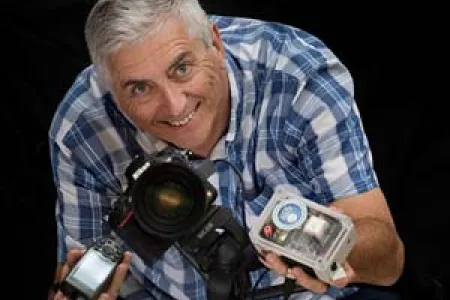CDU researcher to collect data for NASA
A Charles Darwin University researcher will join a team of stargazers from around Australia to capture the path of a NASA spacecraft that is on its way to the asteroid “Bennu”.
Dr Terry McClafferty will collect precious data as part of the observation campaign for the OSIRIS-REx spacecraft “slingshot” or Earth Gravity Assist manoeuvre, which will bring the spacecraft close enough to Earth tonight (22 September) to be viewed through high-end cameras.
Darwin is one of several strategic locations around Australia where members of the Desert Fireball Network (DFN) led by Curtin University will be stationed to optimise viewing angles of NASA’s OSIRIS-REx.
On Friday night, the OSIRIS-REx spacecraft will make a rare close approach to Earth, using the planet’s gravity to slingshot itself closer to the asteroid Bennu. The DFN team members will be stationed across Australia in strategic locations to optimise viewing angles, recording a 3D triangulated track above Australia.
Dr McClafferty, who has been involved in the DFN project since its inception in 2002, said he would use a high-end DSLR camera to track the OSIRIS-REx spacecraft across the sky. He will be joined by Curtin University geology student Morgan Cox.
“The team will beam the information from each viewpoint to enable NASA to create a 3D triangulated track of its slingshot around the Earth,” Dr McClafferty said.
The images collected during the Earth Gravity Assist manoeuvre represent the last opportunity for Earth-based observers to see the spacecraft as it approaches and retreats from its closest position over Earth, about 17,000 km above - until it returns to Earth in 2023 carrying a sample from asteroid Bennu.
Dr McClafferty said he became involved in the project after meeting Curtin University Professor and team leader of the Desert Fireball Network Phil Bland in 2002 while working as regional manager of the Western Australian Museum in Kalgoorlie.
“Phil had come to Australia from London to look for asteroid specimens, so we used to go on expeditions to remote areas to install cameras to capture incoming fireballs,” Dr McClafferty said.
“He was also trialling cameras, which back then were the size of a refrigerator, to track fireballs. The ones we will use on Friday are about the size of a shoebox.”
The OSIRIS-REx Observation Campaign in Australia is a collaboration between NASA and Curtin University that aims to highlight the capabilities of the DFN and planetary science research in Australia, bringing the public along for the ride.
Amateur astronomers can contribute to the data that the DFN sends to NASA. For more information on the project or how to get involved visit W: http://fireballsinthesky.com.au/the-research/nasa-osiris-rex-observatio…
